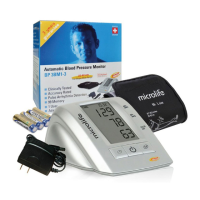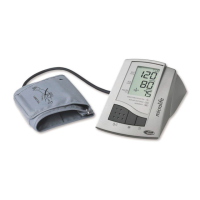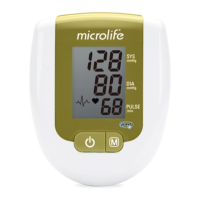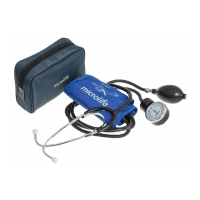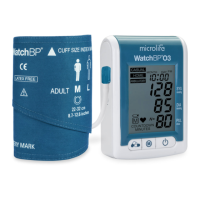5.2. Common sources of error
Note: Comparable blood-pressure measurements always require the same
conditions! These are normally always quiet conditions.
• All efforts by the patient to support the arm can increase the blood-
pressure. Make sure you are in a comfortable, relaxed position and do
not activate any of the muscles in the measurement arm during the
measurement. Use a cushion for support if necessary.
• If the wrist artery lies considerably lower (higher) than the heart, an
erroneously higher (lower) blood-pressure will be measured! (Each 15cm
difference in height results in a measurement error of10mmHg!)
• A loose cuff causes false measurement values.
5.3. Fitting the cuff
a) Remove all eventual objects and
jewellery (e.g. wristwatch) from the
wrist in question. Draw the cuff over
the wrist.
b) The distance between the cuff and the
hand should be approx. 10 mm.
c) Secure the cuff with the Velcro
fastener, so that it lies comfortably and
not too tight, whereby no space should
remain between the cuff and the wrist.
d) Lay the arm on a table, with the palm
upwards. Support the arm a little with
a rest (cushion), so that the cuff rests
at about the same height as the heart.
Take care, that the cuff lies free.
Remain so for 2 minutes sitting
quietly, before beginning with the
measurement.
13
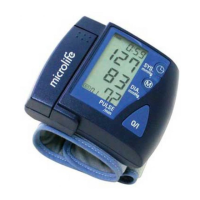
